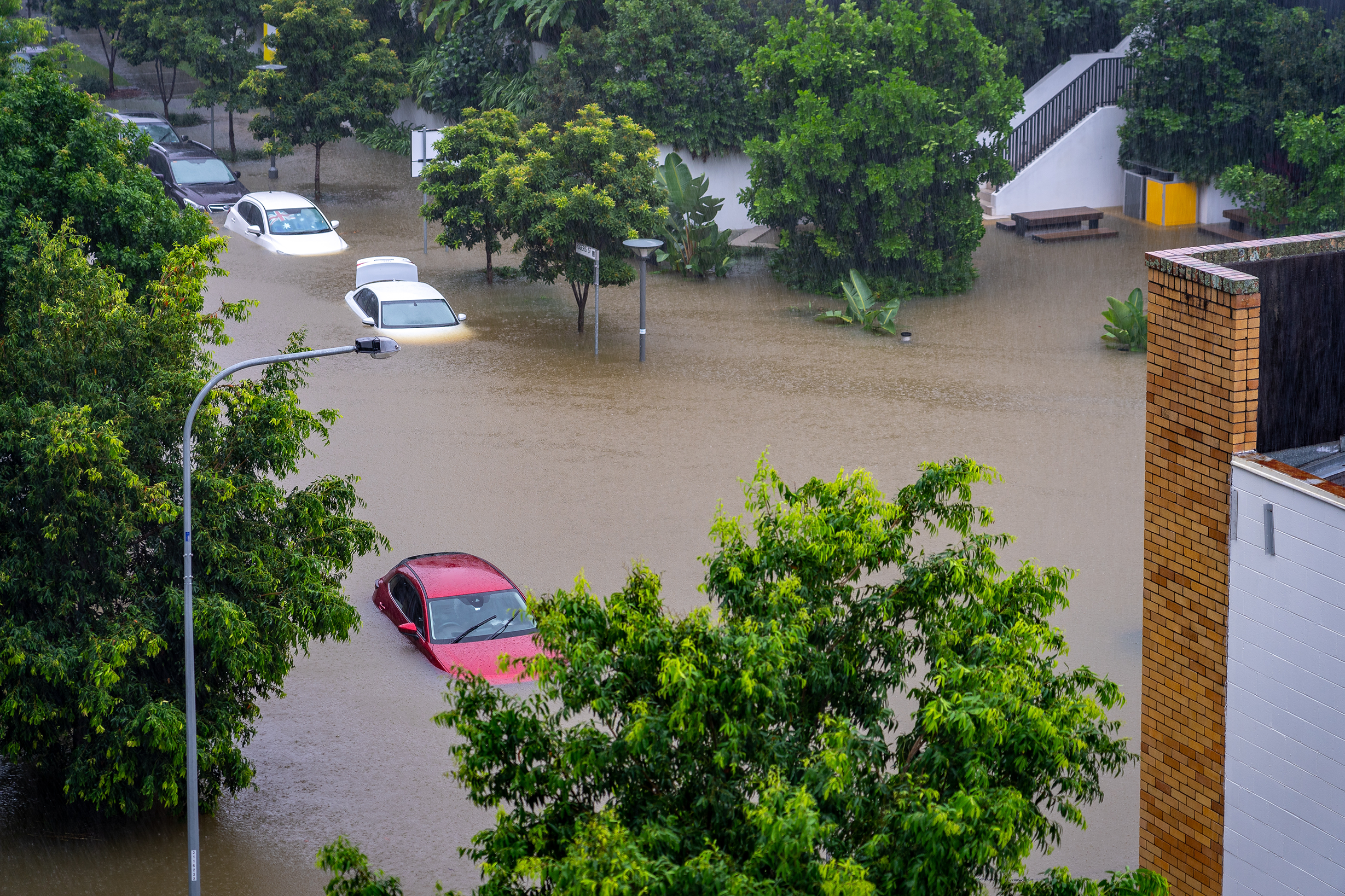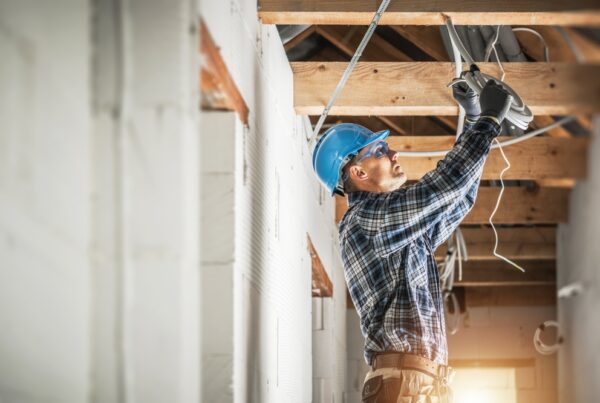The first three months of 2022 brought a year’s worth of rain to Sydney. Tens of thousands of people were displaced, at least 23 people were killed, and more than 20,000 homes and businesses flooded in Queensland.

Floods are one of the most common types of natural disasters. They can also be the most detrimental for highrise buildings. The nature of these buildings makes them particularly vulnerable to flooding caused by severe storms. It may be instinct to think “but I’m several stories above the ground – I’m not at risk for flooding”, however, many of the critical systems in high-rise buildings, including boilers, elevators, generators and water pumps, are located underground, sometimes several levels underground, and the risk to those systems in a flood is high.
Vulnerability doesn’t have to equate to disaster however, management, committees and residents can do a lot to keep people safe and to minimise property loss during a flood. It’s a matter of taking what we’ve learned and applying it to all high-rises – particularly in light of the disasters created by ‘La Nina’ this year.
So, what have we learnt? Before the floods, a lot of buildings didn’t have emergency generators. When the power grid goes down, it causes the fire pumps, sump pumps and water pumps to fail and all the sump pumps that buildings rely on become obsolete.
When fire pumps don’t work, the building must be evacuated. And when a water pump doesn’t work, you should initiate a voluntary evacuation because there will not be working plumbing above the sixth floor. Failure of the sump pump results in standing water and therefore, more damage to the building. This is why high-rises now have generators or co-generators so that these critical systems will continue to run even if a storm disrupts power.
So how can one minimise the risk of a flood in a high-rise building – and meet the challenges of flooding, should it occur.
Know the flood risk
If the building is in a flood zone or located next to a river or body of water, it is obviously at an elevated risk. But one needs to look beyond the obvious. For instance, high-rises located in valleys or low-lying areas might be vulnerable to flooding, even if they aren’t near water.
The construction of the building comes into play, too – those with basements or multiple underground levels may find themselves at risk. To get even more specific, high-rises with basements should assess the equipment that’s located down there. Are there sump pumps? Are there generators? Answering these questions can help pinpoint the risk.
Of course, it helps to get input that goes beyond what one can see with the naked eye. A professional property building services company can help assess potential vulnerabilities too. Building services teams with decades of experience – along with access to local flood data and knowledge of your area – will lend key insight that can serve as the foundation of your preparedness plan.
Protect critical systems
Managers will need to know exactly where all mechanical and electrical systems are located. If they’re in the basement, and the building is at risk of flooding, they will need to insulate and protect this equipment so it remains operational should the worst occur. The same applies to the building’s water pump – in most cities, the council system won’t push water beyond the sixth floor, which would leave residents in the upper part of the building without water in the instance of flood. Without water, bathrooms will no longer be available, which will force an evacuation of the residents.
In addition, ensure the fire pump (which operates the sprinkler system) is protected from potential flood damage, and that there is emergency staircase and corridor lighting that will remain operational even in the event of a power outage. For taller buildings, ensure that there is at least one working elevator during an emergency (most likely, this will be powered by a generator). Don’t let essential back-up systems become inoperable when they are needed most; protect them against flood waters with proper storage. Again, an experienced building services or management company will have encountered this challenge before and can tailor a storage plan to the building.
As a final note on basements: review everything that is stored there and imagine the result if that space filled with water. This might affect how one choose to house other materials – such as fuel, gardening or cleaning supplies. During severe flooding, these materials create an environmental hazard that poses a danger to the residents. Store smart and stay safe.


Create an emergency plan and communicate it
Managers should develop a comprehensive emergency plan that encompasses a wide variety of disasters, including fire, medical emergencies and floods.
A complete plan will include emergency contacts, evacuation maps and directions and tips for residents on how to submit insurance claims. The plan should also list critical items residents should have on hand as part of their personal disaster preparedness kits.
If possible, mangers should also have provisions in place for protecting the most vulnerable residents, such as the elderly, people with disabilities and children. A good property management team will know the resident profiles and will have the experience needed to develop strategies for accommodating these individuals.
Obviously, communication is key. Some management companies have special technologies for keeping residents informed during emergencies that may include email, text message or phone during times of crisis.
Where possible, create a staffing plan for emergencies, with planning right down to stocking food and providing accommodations for the extra team members you may need on-site during a flood. The extra hands will also provide invaluable help in sourcing preparedness items such as portable foundation walls or sandbags you can install around your building when there’s a forecast for heavy storms and possible flooding.
Should a disaster occur, a residential property management company with vast resources can help find critical equipment like additional back-up generators from their roster of certified, quality vendors in other markets. This can be invaluable when local resources for these items are tapped out due to heavy demands in emergency situations.
Once the emergency plan is in place, get the word out to your residents, building staff and management team, using electronic documents for the tech-savvy and printed materials for residents who prefer hard copies.
Ensure that you have the right insurance
Much to their detriment, many high-rise bodies corporate put their insurance on auto-pilot. It’s best practice to review the policy with an experienced insurance agent who specialises in high-rise properties annually.
By conducting a policy review process each year, you will be assured that the committee has the maximum available insurance coverage for the best possible price. What’s more, a great property management company can help implement policies and procedures that lower your building’s risk and, as a result, could lower the premiums, too.
Flood insurance can be valuable even if the property isn’t required to have it. City storm water systems can get overloaded quickly, and if the storm sewers can’t handle flooding and back up into the building, causing damage, the flood insurance will cover it; so, it’s the responsible thing to do.
And just because the residents aren’t located on the ground floor, the lobby, reception and resident facilities may be damaged, and owners could be forced to pay a special levy. Having an insurance policy with special assessment coverage makes a difference but until it’s needed, we don’t fully appreciate how important it can be.
While there’s no way to prevent a flood, with proper preparation you can mitigate the potential damage – and more importantly, keep the residents safe. Put a plan in place now.




